Sony announces the FX3: Its most compact Cinema Line camera ever is aimed at solo shooters
posted Tuesday, February 23, 2021 at 11:00 AM EDT
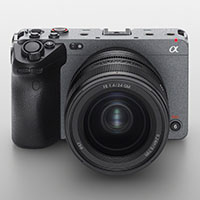
Sony announced a new addition to its Sony Cinema Line, the FX3. The cinema line currently comprises the Venice, FX9 and FX6 cameras. The new FX3 is the most compact Cinema Line camera, blending Alpha 7S III-like form with FX6-like cinema performance.
At the heart of the FX3 is a full-frame 12.1-megapixel Exmor R backside-illuminated image sensor. The 12MP sensor has a high ISO of 409,600 and promises up to 15+ stops of dynamic range when recording in S-Log 3. The 12MP sensor can also record still images at up to 10 frames per second.
Sony FX3 Key Features
- 12.1MP full-frame backside-illuminated image sensor
- Standard ISO range of 80-102,400, expandable up to 409,600
- 4K recording up to 120p frame rate
- Full HD video at up to 240 fps
- In-body 5-axis image stabilization
- 16-bit RAW via full-size HDMI output
- 15+ stops of dynamic range using S-Log 3
- 'Uninterrupted' 4K 60p recording thanks to flow-through ventilation and cooling fan
- S-Cinetone Picture Profile
- Up to 627 autofocus points when recording video
- Bionz XR processor
- Reduced rolling shutter effect
- User-friendly controls
- Tally lights
- XLR audio inputs
- Included XLR handle
- Dedicated zoom rocker
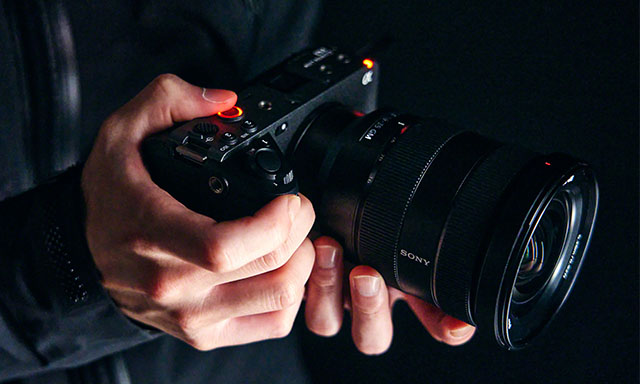
In terms of video quality, the FX3 records 4K UHD video at up to 120 frames per second. When recording Full HD video, the maximum framerate is 240fps. The camera includes Sony's S-Cinetone Picture Profile, promising a beautiful, cinematic look with soft tones. There are 11 selectable Picture Profiles in total. The FX3 includes S-Log3 gamma, S-Gamut3 and S-Gamut3.Cine color spaces. When shooting in S-Log 3, the FX3 promises more than 15 stops of dynamic range, per internal Sony testing.
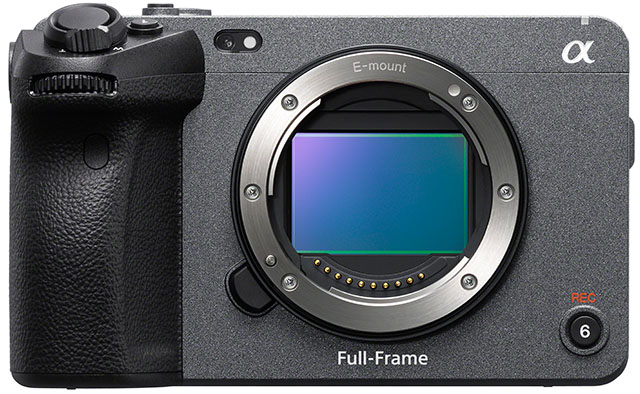
With All-I (XAVC S encoding), the bitrate is up to 600Mbps. The FX3 records 10-bit depth images with 4:2:2. The cinema camera includes MPEG-H and HEVC/H.265 coding. 10-bit 4:2:2 Hybrid Log-Gamma (HLG) is also available in all recording formats. The FX3 includes proxy recording functionality, and 10-bit Full HD and 8-bit 720p proxy options are available.

Sony designed the FX3 for the solo shooter, whereas its other Cinema Line cameras are oriented more towards production teams. To that end, the FX3 is more compact, mobile and lightweight than existing FX-series cameras and the Venice. A solo shooter demands more in terms of autofocus capabilities as well, so the FX3 has been designed to deliver high-end AF capabilities in addition to features to aid manual focus operation. Sony states that the control layout is very different from other Cinema Line cameras.
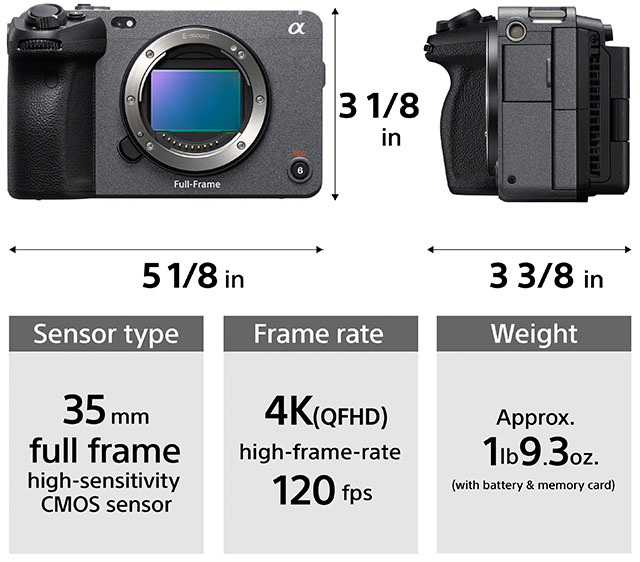
The FX3 weighs a mere 715 grams with a memory card and battery. The camera is 5.1" wide, 3.1" tall and 3.3" deep at its maximum. Despite its compact stature, the FX3 includes a pass-through heat dissipation design and has a built-in fan, which Sony states is nearly silent. Thanks to the thermal design, internal Sony testing found that the FX3 can record 4K/60p video for up to 13 hours. Of course, ambient temperature conditions can affect this result, but it's nonetheless impressive given the size of the camera. The flow-through ventilation system in the FX3 is the smallest system like it that Sony has created to date.
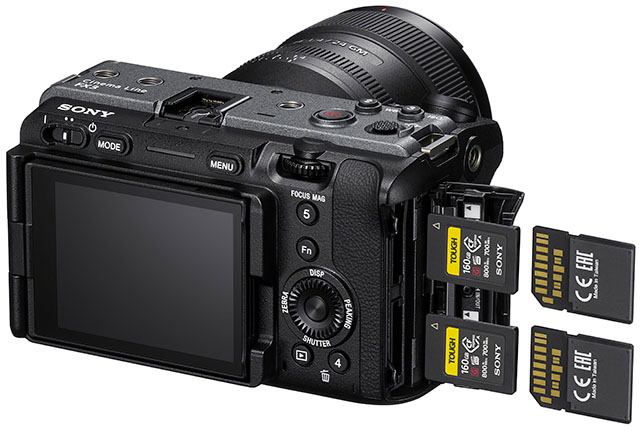
There are tradeoffs to achieving the compact stature, however. The FX3 doesn't include SDI connectors, nor does it have space for the electronic filter included in the FX6. This means that the FX3 doesn't have a built-in electronically-variable neutral density filter.
On the plus side, the FX3 has a cage-free design. There are five ¼-20 UNC mount points available on the camera and the included detachable XLR handle. The mount points are supported by an internal stainless-steel substructure inside the magnesium-alloy FX3. You can use these mount pints to attach various accessories.
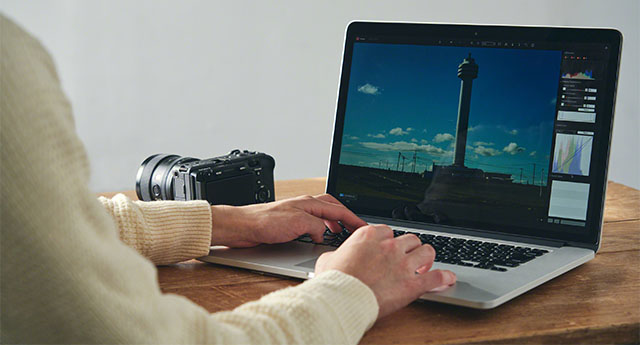
Inside the camera, the FX3 features a 5-axis in-body image stabilization system. This marks the first time Sony has included I.S. in a Cinema Line camera. The IBIS system includes an Active Mode, extending the range of compensation in exchange for a roughly 10% image area crop. With the solo shooter in mind, the FX3 can be used handheld without requiring the use of a gimbal. You can also use Catalyst Browse and Catalyst Prepare software to utilize the gyro's data stored in the metadata of recorded clips. Using software such as this, the user can select the range of compensation and resulting crop when processing video files.

Autofocus performance is driven by Sony's Hybrid AF technology. The FX3's 627 autofocus points cover approximately 94% of the vertical image area and 95% of the horizontal image area. The FX3 includes Face Detection and Real-time Eye AF, as well. You can utilize the rear Vari-angle touchscreen to enable touch tracking and enable autofocus when manually focusing. Like with the FX6 and A7S III, there is also considerable user control over autofocus transition speed and subject shift sensitivity. Although we don't have specific figures, Sony also promises strong low-light autofocus performance.
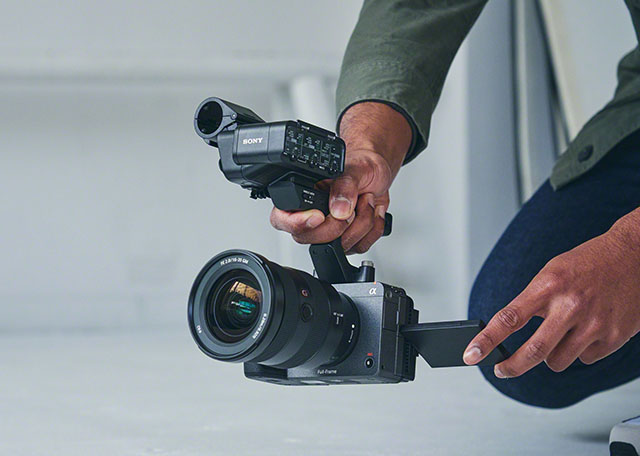
The FX3 body includes weather sealing at many locations, including body seams, compartment covers, hinged doors, and the media slot. Sony states that the device is dust- and moisture-proof. The camera includes a full-size Type A HDMI slot, which supports 16-bit RAW output. The camera can utilize wired LAN via a compatible USB adapter and includes a USB Type C Superspeed port in addition to a micro USB terminal. The camera has built-in Wi-Fi with 2.4GHz and 5GHz channels. The FX3 supports mobile tethering, remote control and FTP data transfer. You can use a USB power delivery device via USB-C as well.
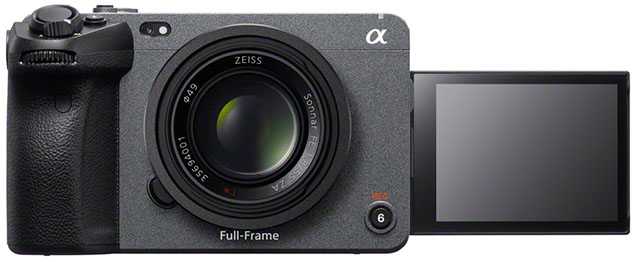
When using the supplied XLR handle, the FX3 offers 4-channel 24-bit audio recording. The handle includes XLR inputs, a built-in stereo mic and a 3.5 mic jack. The FX3 body itself includes mic and headphone jacks and includes a built-in stereo mic as well. The FX3 supports numerous accessories, including mics, lights, grip, wireless mics and more.
If the Sony FX3 has all these features in a small form factor, what separates it from the FX6? The FX3 doesn't include built-in LUTs, nor does it have the continuously-variable built-in neutral density filter. The FX6 also includes DCI 4K, pure 24p frame rate, 12G-SDI, timecode and its larger size allows for different functionality.
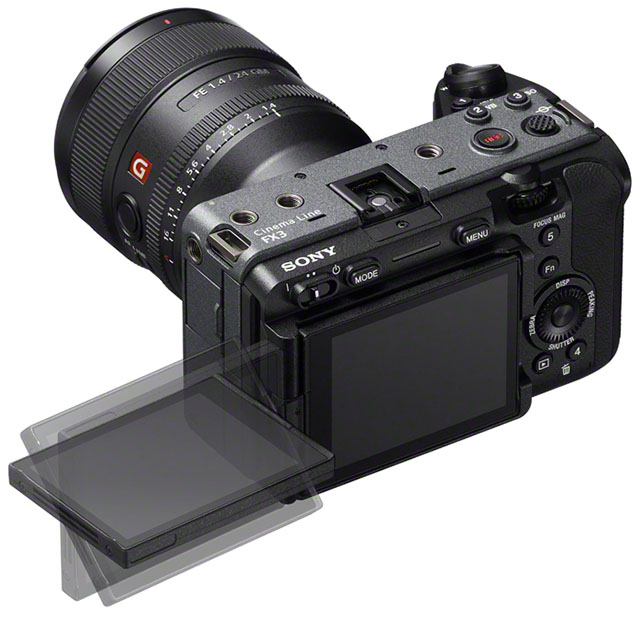
The FX3 is nonetheless in a class of its own concerning functionality in a compact form factor. Compared to the A7S III, which is not wholly different in terms of overall size, the FX3 has a more video-friendly design and additional features. The FX3 has S-Cinetone, something the A7S III doesn't currently offer. The FX3 also has an internal fan, tally lights, video-friendly controls and additional expandability.
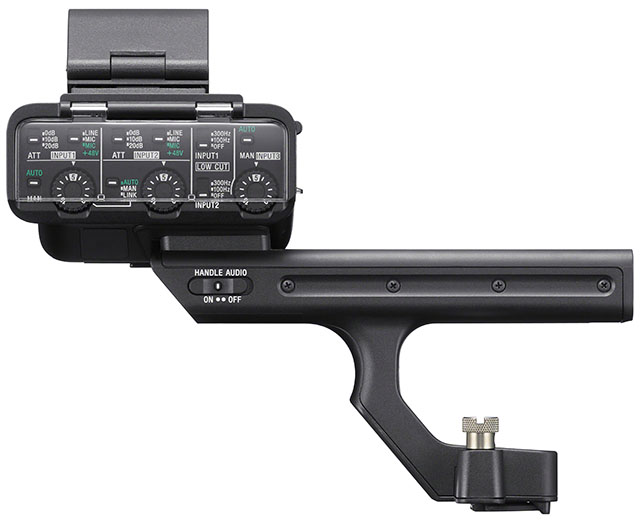
Ultimately, Sony is marketing the FX3 as a compact, cinema-centric camera geared toward solo shooters. This is evidenced by the camera's S-Cinetone Picture Profile, internal cooling, XLR handle, cage-free design, tally lights and video control layout.
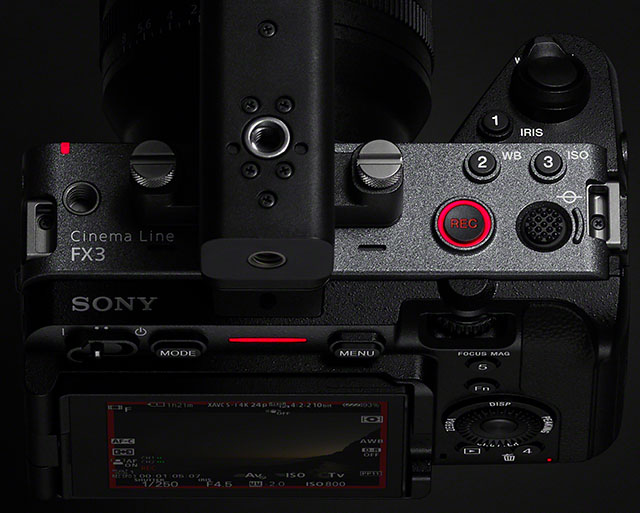
The Sony FX3 will be hitting the market in mid-March with a suggested retail price of $3,899 in the United States and $4,999 in Canada. The FX3 ships with the XLR handle in the box. The handle will not be sold separately.